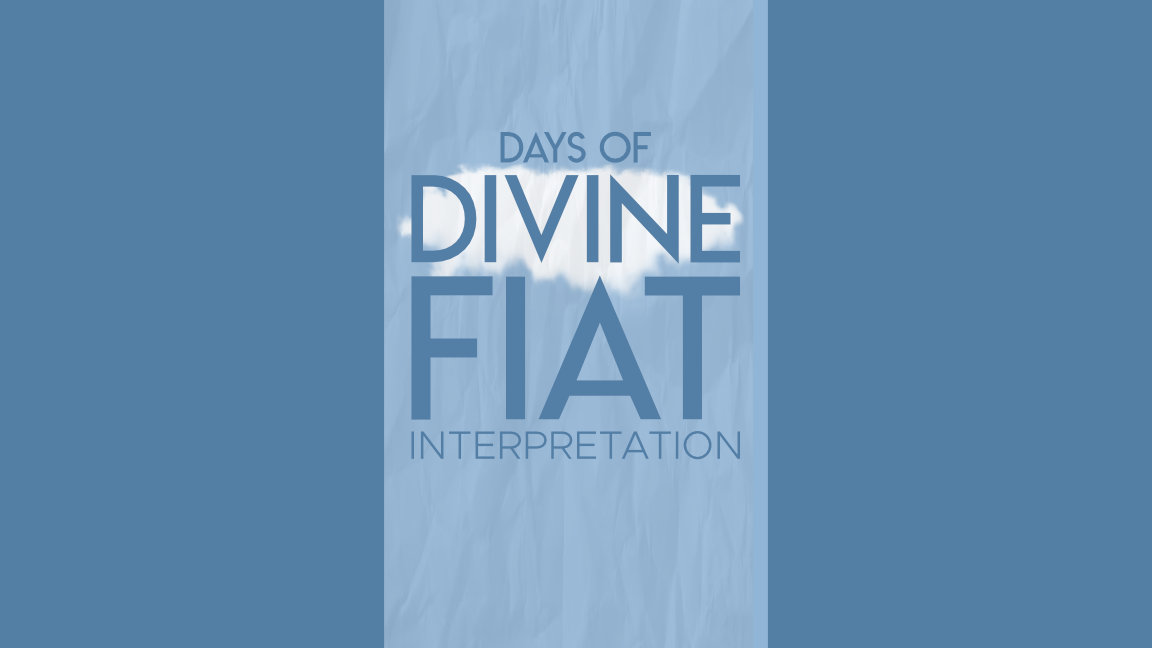 The Divine-Fiat Interpretation originated with F. Hugh Capron in 1902. However, Alan Hayward (a British engineer and physicist) was its most famous proponent.[1] However, Hayward himself belonged to a non-Christian sect called Christadelphianism (which denies the deity of Christ, salvation by grace through faith alone, and penal-substitutionary atonement).[2] Needless to say, this view is not off to a good start!
The Divine-Fiat Interpretation originated with F. Hugh Capron in 1902. However, Alan Hayward (a British engineer and physicist) was its most famous proponent.[1] However, Hayward himself belonged to a non-Christian sect called Christadelphianism (which denies the deity of Christ, salvation by grace through faith alone, and penal-substitutionary atonement).[2] Needless to say, this view is not off to a good start!
From this perspective, the six days of creation refer to God’s perspective from heaven—not Earth. While God announced his decree over six consecutive 24-hour days in heaven, the results took place over indeterminate periods of time on Earth. According to Hayward, God’s commands are followed by parentheses, explaining the effect on Earth. He writes,
[Genesis is] basically an account of the great creative fiats which were uttered upon the six (presumably literal, consecutive) days. Inserted into this primary narrative is a whole series of parentheses which describe the subsequent fulfilment of the fiats. The out-workings of the fiats, of course, could have taken any amount of time to occur. The fiats of God are uttered swiftly, but his mills grind slowly.[3]
The corresponding events on Earth could take time or even overlap with one another: “The broad similarity is because the creative processes were presumably started in much the same order as the daily fiats. The discrepancies are because those creative processes took varying lengths of time to complete so that there would be a great deal of overlapping in the periods of active creation.”[4]
Critique of the divine-fiat interpretation
While this view is interesting at first glance, it completely removes the events of Genesis from history. However, Genesis interacts with actual events on Earth—not in heaven. In fact, the heavenly realm isn’t even mentioned in this chapter. By contrast, God is seen as a theophany walking through the Garden on Earth (Gen. 3:8). Nothing in the text sets the passage in heaven, but rather, the setting is on Earth.
[1] Alan Hayward, Creation and Evolution: The Facts and the Fallacies (London: Triangle, 1985).
[2] In fact, Hayward wrote instrumental Christadelphian literature, which is still widely distributed today, “Did Jesus Christ really come down from Heaven?”
[3] Alan Hayward, Creation and Evolution: The Facts and the Fallacies (London: Triangle, 1985), pp.169-171.
[4] Alan Hayward, Creation and Evolution: The Facts and the Fallacies (London: Triangle, 1985), pp.176-177.
